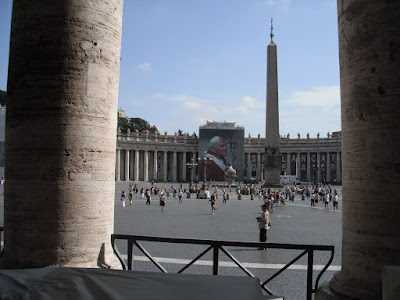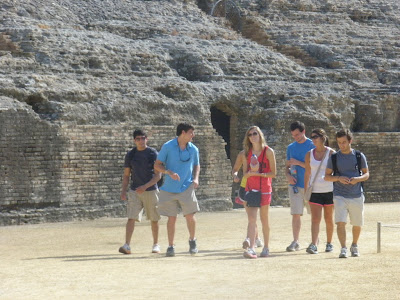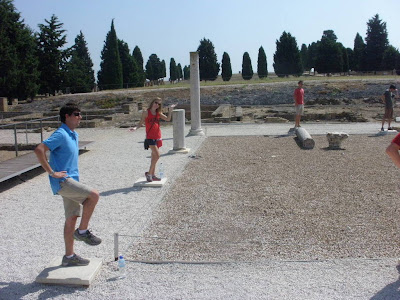
If you want to know what to see in Spain, contact Kate and Amber. They clearly could make a go as travel agents if this engineering thing doesn't work out for them.
Here is a great collection of pictures from their visit to Barcelona.
-----------------------------------------
This past weekend Amber and Kate traveled to the great city of Barcelona. There was so much to do, yet so little time. In Barcelona, it was the first time we had stayed in a hostel room shared with 4 other girls we didn’t know. They turned out to be from Italy, though we never officially met them; we kept missing them, either we’d be out and they’d be in or vice versa. We did however leave little notes in the room writing back and forth to keep in touch.

We got the most out of our trip in such a small period of time by riding the Barcelona Hop-on Hop-off Tour bus. This bus system consisted of three different routes which drove through the whole city past major tourist attractions and provided us with a description of each site through listening devices for each passenger.
Along the tour we stopped at Temple de la Sagrada Familia. This is an unfinished cathedral begun in 1882 by Gaudi however, still remains unfinished because its construction relies solely on donations. Antoni Gaudi is an architect well known for his Catalan modernism designs. His work is spread everywhere throughout Barcelona at other sites like the UNESCO World Heritage Site Park Guell; Passeig deGracia which is where La Pedrera, the largest civil building by Gaudi, and Casa Batllo are located.



We left the bus and walked through the gothic quarter of Barcelona, stopping at the Cathedral La Seu where we saw the crypt of Sana Eulalia, the patroness of the cathedral and co-patroness of Barcelona, and a cloister with a small pond housing white geese, whose ancestors had lived there for five centuries.


After walking up the shopping area of Las Rambas, we also discovered El Museu de la Xocolata. (The Chocolate Museum). We must admit, this was one of our favorite museums thus far. Not only did they give us free chocolate, but it contained everything from stories of the beginnings of chocolate, chocolate sculptures, and cooking classes.

The metro also became a major form of transportation on this trip. By the end we knew exactly what routes we had to take to reach our destination. While in one of the stations we actually witnessed a man getting pick pocketed. Luckily, the man realized what was happening and nothing was stolen. We’d always been told to watch our belongings, but after that we held tightly onto our backpacks and were on the lookout for suspicious behavior.

Continuing on, we saw several sites related to sporting events. Firstly, the largest stadium in Europe: Nou Camp Stadium, home to Futbol Club Barcelona (aka. Soccer). As well as several stadiums used in the 1992 olympics featured in the city. Later that day we stopped at the Port Olimpic District where we managed to squeeze a little beach time into our busy day (yay!).

Port Olimpic is also known for their night life. We decided to check it out by stopping by IceBarcelona. This little bar was literally right off the beach, yet was completely covered in ice. It was like we were inside a freezer. Everything was covered in ice, the walls, the glasses, ice sculptures, even the benches which had fur on top. Luckily they provided us with parkas and gloves, but even then, we weren’t able to make it more than 30mins inside.

That night we also went to view the Font Magica in Placa Espanya. This was a fountain show using the various water fountains and lights synced to music to create a very unforgettable display. All in all, we’d say this was a very successful trip for such a short amount of time in this wonderful city.


























































